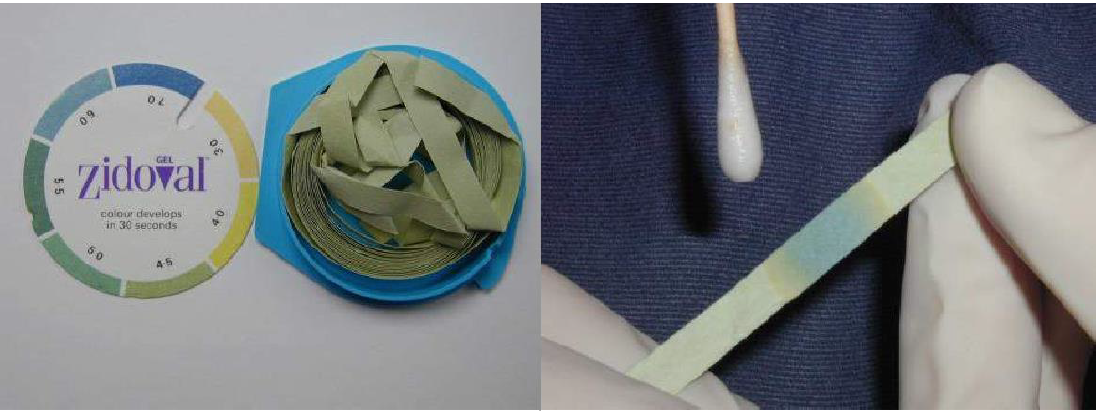PH testing in the assessment of vaginal discharge
Point of care testing for pH of vaginal discharge
- the pH of vaginal discharge can be very helpful in making a diagnosis during examination
- most patients should have bedside pH testing of vaginal discharge in preference to taking a HVS
- vaginal secretions should be collected from the lateral vaginal walls using a swab or small loop. The sample should be applied to narrow range pH paper (pH 4-7)
- vaginal pH testing can be used to assess the likelihood of Candida (pH < 4.5) or of BV or TV (pH >4.5) but it cannot distinguish between BV and TV (1)
- thus a bedside diagnosis can be made on the basis of history plus clinical signs and the pH of the discharge

A HVS is not recommended in routine cases as it is unlikely to be of significant diagnostic value (2):
- situations where an HVS is indicated are:
- postnatal infection
- pre & post termination of pregnancy
- pre & post-operative gynaecological surgery
- persistent or recurrent (>=4 episodes/year) symptoms
- symptoms not characteristic of candida or BV
Reference:
- Sexually transmitted infections in primary care. RCGP Sex, Drugs, HIV and Viral Hepatitis Group and BASHH, 2013
- Jungmann E, Johnson AM, Ridgway G, Durrant K, Robinson AJ. How useful are high vaginal swabs in general practice? Results of a multicentre study.Int J STD AIDS 2004; 15: 238-129
- Oxfordshire Clinical Commissioning Group. Investigation and Management of Vaginal Discharge in Adult Women (Accessed 23/5/19)
Related pages
Create an account to add page annotations
Annotations allow you to add information to this page that would be handy to have on hand during a consultation. E.g. a website or number. This information will always show when you visit this page.